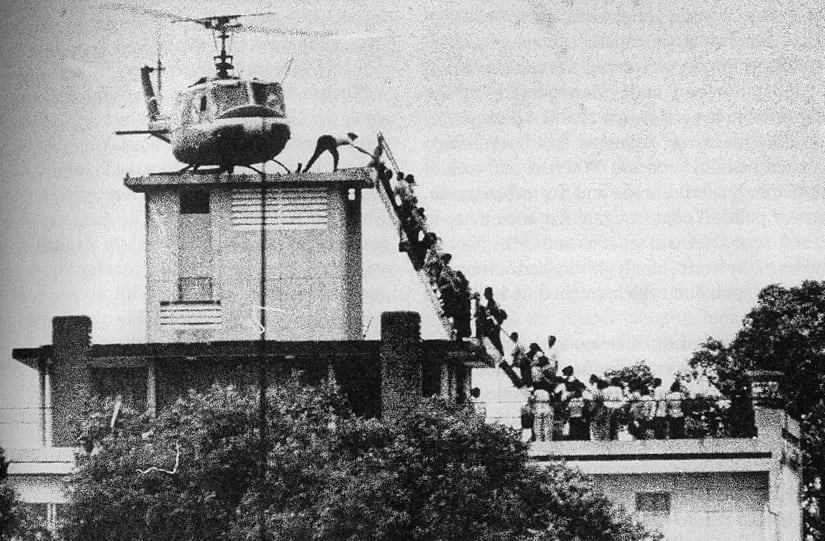From culture to operations, the Pentagon is an institution unto itself.
And just as there are the historic events that shaped government operations overall during the last 50 years – the top 10 of which Federal Times unveiled earlier this month – there are policies that shaped and reshaped how the mega institution we know as the Department of Defense functions.
Here are our picks for the most influential.
Goldwater–Nichols Department of Defense Reorganization Act
In 1986, the Goldwater-Nichols Act streamlined the chain of command structure at the Pentagon, connecting the defense secretary to the combatant commanders and shifting service chiefs to advisory roles to both the secretary and the president, among other responsibilities. The original goal was to mitigate rivalry and stovepipes between the services, especially post-Vietnam.
The sweeping changes were the greatest the military had seen since World War II, and they set the trajectory for Defense Department command structure for decades to come.
"Before Goldwater-Nichols, the Chairman of the Joint Chiefs was a figure head, but lacked the power to coordinate a unified approach. Regional combatant commanders were largely extensions of the dominant military service deployed in the theater," John Hamre, CEO of the Center for Strategic and International Studies, told Congress Nov. 10. "The Goldwater-Nichols Act changed all this. Of course there are still strong parochial forces within [DoD]. But the senior officer corps today genuinely knows more about the other services and respects their capabilities and operating procedures. Senior officers genuinely think 'jointly' now, something that was quite rare 35 years ago. This has produced the finest fighting force in the world."
RELATED

Base Realignment and Closure Act
Military installation buildups and closures fluctuated over the decades since the 1950s in response to a new era of global threats, but the 1980 Base Realignment and Closure Act introduced a new dynamic: Congress versus the military.
In the five rounds that would follow over the next 25 years, and proposed rounds that would be denied, power struggles surrounded the closure of military bases in response to a changing geopolitical climate and threat landscape. The winding down of the Cold War signaled the beginning of BRAC, and now with the theoretic drawdown of troops in southwest Asia, Pentagon leaders find themselves again asking those tough questions. With that, the political battles reemerge, with the Pentagon noting excess capacity and searching for efficiencies, only to be stonewalled by Congress.
It's a decades-old legacy that refuses to die, but does evolve. Just as military leaders testify they could save billions with more rounds of BRAC amid sequestration and decreased spending, the dialogue among those that pushback has changed.
"The way communities respond to the BRAC process is getting even more sophisticated. You are seeing elaborate economic impact studies done by private, high-impact consulting firms in Washington, D.C., that are going to be used to influence these decisions," said Brent Eastwood, founder and CEO of GovBrain, a political intelligence and government analytics firm for the investment community. "Stakeholders are going to be spending $250,000 to $500,000 an installation for BRAC advocacy. Maybe more. And there will be modern public affairs grassroots campaigns to advocate for keeping the status quo and fighting re-organizations."
The Last Supper
In July 1993, then-Deputy Defense Secretary William Perry presided over a meeting with industry executives that would become known as the "last supper," an event that signaled major changes with the end of the Cold War. It also triggered shifts in the defense industrial base still felt today.
"The reason we had what became regarded as the last supper was that it was just after the Cold War, and defense budgets were going down. In the first Bush administration it went down 3 percent to 5 percent every year, and we saw that going on for another at least five years, maybe longer," Perry said in an interview with Federal Times.
The goal of the dinner was to encourage effective and efficient restructuring at the companies. Indeed, there was some of that; but the pendulum swung far, and many companies consolidated or exited the market. Competitive acquisition took a major hit as a result of the mergers, something that defense officials still are trying to fix today through such initiatives as Better Buying Power.
"Some consolidation was alright, and probably an inevitable consequence to reducing the size of the defense budget, but I think the consolidation part was overdone," Perry said. "And it had one deleterious consequence, which was some programs lost [the] robust competition we needed."
RELATED

Repeal of 'don't ask, don't tell'
The Clinton Administration's "don't ask, don't tell" policy, instituted in 1994, aimed to prevent discrimination and harassment against gays in the military, but it also barred them from discussing homosexual relationships or preferences under the threat of being kicked out for doing so. It was an effective ban on openly gay men and women serving in the military.
The law was repealed in 2011, providing welcome relief to an estimated 65,000 closeted gay and lesbian troops and inching the Pentagon forward to better mirror changes in society at the time. DADT's repeal was a step forward, to be sure, but many say it wasn't enough.
"Congress's repeal of [DADT] was a watershed moment that ended institutionalized discrimination unjustly targeting gay, lesbian and bisexual service members. Yet thousands of service members who were discharged because of their sexual orientation still bear the scars of that discrimination," a team of senators behind the new Restore Honor to Service Members Act wrote in a November USA Today op-ed. "We are in the middle of a historic moment for gay rights in America. We have struck down [DADT] and we have legalized same-sex marriage. Now, let us restore the honor that is long overdue to our gay, lesbian and bisexual service members."
The senators behind the bill, led by Sen. Brian Schatz, D-Hawaii, wrote that more than 100,000 troops are estimated to have been discharged from the military since World War II because of their sexual orientation.
Cyber, a military domain
Computer-based battles may go back decades, but it was in 2010 that cyberspace was effectively affirmed as the fifth military domain, joining air, sea, land and space as the official realms of war. That year President Barack Obama declared America's digital infrastructure to be a "strategic national asset" and appointed Howard Schmidt as cybersecurity czar. The same year, the Defense Department launched the U.S. Cyber Command, and behind the scenes military officials were hard at work on the policies and strategies of the cyber domain.
Establishing cyberspace as a military domain provided functional benefits: It brought cyber into the well-oiled machine of Pentagon operations and military formations, tactics, techniques and procedures. It also delineated cyber funding, and set the stage for training and equipping cyber forces in each service.
Since 2010, the Pentagon has released two cyber strategies directing the coordination of cyber operations. The more recent strategy, released in April, also emphasizes culture – another key area that continues to evolve in the cyber domain.
"I remember being at one deputy committee session and making a statement about the responsibility of the military to defend the U.S. homeland, including cyberspace, and I got immediate pushback on that," said retired Maj. Gen. Brett Williams, former CyberCom director of operations/J3 and now president of operations and training at IronNet Cybersecurity. "So now we see that very clearly laid out: Just as all the other military forces have the responsibility to defend the homeland in the air, land, space and maritime domains, we have the responsibility to do that in cyberspace."
See our special report: 50 Years of Government Change





